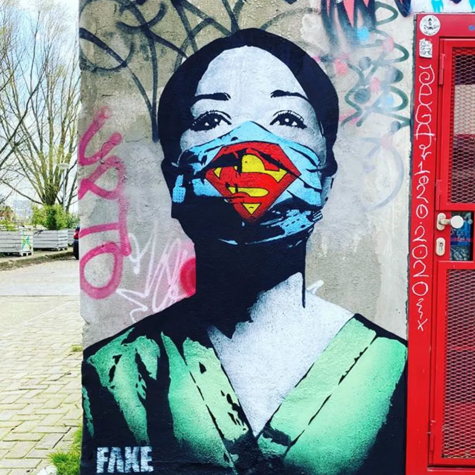
You’re so bored. You’ve watched every season of The Office-seven times. You’ve made twelve different kinds of sourdough bread. You’ve sewed enough masks for every hospital in the Twin Cities. You’ve FaceTimed friends you haven’t seen since you were in elementary school. Your legs are numb from all the sitting you’ve been doing. Your eyes are bleary from all the videos you’ve been watching. You almost can’t take it anymore.
You wander aimlessly through the house in your tattered pajamas, opening drawers, trailing your fingers down the railing, looking and feeling utterly forlorn. Venturing into the spare room, you spy the crusted paint pots. Three hours later, you have your masterpiece (an abstract rendition of your garden) and you feel a little better.
Many students in the spring and summer of 2020 felt lost, and found comfort in various forms of art. In a discipline often dismissed as useless, we as a society have been reminded of just how important and necessary art is.
One student said that creating art during Coronavirus actually made her have a more “inward view.” She commented that, in contrast to others, she didn’t have expectations of a boring quarantine because she looked at art with an open mind. Art, whether it be painting, music, or doodles on your notebook, promotes a healthy state of mind. The student found reaching out of her artistic comfort zone during COVID was a healthy chance to grow to be more adventurous. She also hoped that people’s time in quarantine would help them to realize that art is for everyone and encourages everyone to “just go for it.”
Another student had a different experience of creating art during her time at home. She saw the loss of face to face connection as an opportunity for a different kind of communication: art. She follows various artists on social media, one of the few ways to see art while confined at home. Not only experiencing communication by looking at art online and creating personal art, this student also painted envelopes to stay in contact with friends. The lack of in-person contact this spring and summer influenced this student’s perception of how she related to other people.
Art has guided many to find themselves, connect with the environment around them, and communicate with people they don’t even know, just by showing their work in a public space, such as social media. Art doesn’t always need to be curated; personal creations can influence one’s inner peace and ground the artist even further into self-composure. We should never underestimate the power artwork has to provide opportunities for growth and connection.










